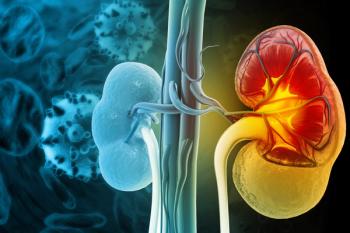
Kratom Controversies: Exploring Use and Regulation
Key Takeaways
- Kratom contains psychoactive alkaloids mitragynine and 7-OH, with 7-OH being significantly more potent than morphine as a μ-receptor agonist.
- The FDA's intent to schedule 7-OH has sparked debates over kratom's safety, legality, and potential for abuse and dependence.
Kratom, a natural product known for its psychoactive effects, has been at the center of continued dispute since its introduction to the US market in the late 20th century. With the announcement by the FDA on July 29, 2025, expressing their intent to schedule 7-hydroxymitragynine (7-OH), a known component of kratom, under the Controlled Substance Act, contention has once again been sparked between kratom supporters and those against its use.¹ This announcement comes as the country has seen an increase in public kratom adulteration with synthetic 7-OH in the last decade, raising concerns regarding the risks of abuse, dependence, and toxicity for these products.²
According to data from the Substance Abuse and Mental Health Services Administration, approximately 1.9 million Americans aged 12 and older utilized kratom in 2022, with over half of consumers being female.³′⁴ Internet-based surveys have seen that kratom users are predominately white, middle-income, middle-aged adults who are college educated, employed, and either married or in a committed relationship.⁴ The largest US geographical region represented by kratom users in the survey was the South, with most patients citing the treatment of pain, mental health, or serving as an opioid alternative as the primary reasons for use.⁴′⁵
Defining Kratom
Kratom, which has traditionally been referred to as ketum, biak biak, or giam, is an herbal product derived from the leaves of Mitragyna speciosa, a species of tropical evergreen tree in the coffee (Rubiaceae) family. The tree is native to Thailand, Malaysia, Indonesia, Cambodia, and other countries of Southeast Asia.⁴′⁶ Kratom was traditionally utilized by laborers in this region for pain relief and fatigue by chewing the leaves or brewing them into tea.² Kratom has been used historically to treat symptoms of opioid withdrawal, anxiety, and decreased mood; however, there are insufficient safety and efficacy data to support the clinical recommendation for kratom use in these indications.⁷
Kratom contains more than 50 identified alkaloids, 2 of which (mitragynine and 7-OH) have displayed psychoactive effects through partial agonism of μ-opioid receptors.⁵′⁸ Mitragynine is the most abundant alkaloid within kratom, making up approximately 66% of the total alkaloids found in kratom leaves.⁵ It has also been shown to inhibit cyclooxygenase-2 messenger RNA (mRNA), resulting in pain relief by non-opioid receptors.⁴′⁶ Kratom’s other psychoactive component, 7-OH, is a metabolite of mitragynine.⁹ It has been estimated to be 10 to 13 times as potent of a μ-receptor agonist as morphine; however, it is only reported to constitute 1.6% of the total alkaloid content within natural kratom leaves.¹⁰ There are currently no FDA-approved drug products containing kratom or its psychoactive components.¹
Kratom’s psychoactive effects differ based on the dose consumed. At low doses, around 1 g to 5 g of raw plant material, kratom is seen to have stimulating effects, including increased energy, alertness, social behavior, and heart rate.¹¹ At doses beyond 5 g, kratom produces effects similar to opioids and sedatives, such as decreased pain stimulation and euphoria.⁴′¹¹ Common adverse effects seen with its ingestion include gastrointestinal upset, anticholinergic effects, agitation, drowsiness, and confusion.¹² Symptoms of toxicity have been noted to occur at doses exceeding 8 g/day and long term use has been associated with dependance, tolerance, and withdrawal.¹³
Consumption has been linked with serious adverse effects as well, including cardiovascular and renal damage, respiratory depression, serotonin syndrome, and death; however, a definitive association between kratom and these effects has not been established.¹³ Additionally, a case study from 2008 described a potential drug-drug interaction between kratom and modafinil (Provigil; Cephalon) resulting in seizures.¹⁴ This study has led to the hypothesis that kratom may exhibit proconvulsant properties, which lower the seizure threshold and cause harm without a drug interaction in some patients.
Pharmacokinetic (PK) data for kratom are limited; however, there are a small number of studies that have derived PK data for isolated 7-OH. The half-life for 7-OH is documented to be between 1.7 and 5.7 hours, increasing with higher doses.¹⁵′¹⁶ Peak plasma levels were recorded about 1 to 1.8 hours after ingestion, and steady state was reached around 7 days.¹⁵′¹⁶ Results of these studies vary due to different formulations of kratom used and differences in the methods of analysis.⁸ One study also found a PK difference between S and R enantiomers of the alkaloid, with the S enantiomer having a shorter time to peak plasma level, longer half-life, and higher volume of distribution than the R enantiomer.¹⁶
Kratom also acts as a CYP1A2 and CYP3A4 substrate with the potential to cause increased levels of drugs metabolized by these enzymes, which include many commonly used medication classes, such as select antipsychotics, selective serotonin receptor inhibitors, tricyclic antidepressants, benzodiazepines, and antibiotics.¹⁷ Taking kratom in combination with central nervous system depressants and serotonergic drugs may increase adverse effects, resulting in toxicity or patient harm.¹⁷′¹⁸
Studies reviewing kratom’s risk of respiratory depression have shown mixed results. One study concluded that 7-OH produces respiratory depression at a 3-fold greater rate than morphine, whereas another found that neither of kratom’s bioactive components was shown to contribute to significant respiratory depression when studied in animal trials.⁴′⁹ Standardized toxicology screening utilizing urine and blood samples does not detect kratom; therefore, overdose or high serum levels of kratom may be difficult to identify and diagnose. Traditional reversal agents such as naloxone have been effective against kratom overdose and should accompany supportive care treatments based on patients' clinical status. Rebound hypoxia has been documented by the Poison Control Center to occur 12 to 24 hours after kratom overdose; therefore, they strongly recommend monitoring patients within the inpatient setting during this time.¹⁹
Controversy Regarding the Use of Kratom and 7-OH
Where kratom and 7-OH products are still available, they are sold in gas stations, smoke shops, and online vendors for recreational use without the need for a prescription or pharmacist oversight. These products are found in an abundance of formulations, including powders, capsules, tablets, liquids, gums, and resins, none of which are regulated by the FDA.¹¹ An analysis of online vendors selling kratom products found that 92% of available products for purchase were specifically advertised as containing only 7-OH.²⁰
In recent years, the 7-OH content in select kratom products has been found to exceed natural levels found in kratom leaves, suggesting these products have been chemically enhanced to increase 7-OH content.⁸ One study reviewed 8 kratom products that were commercially available and found that they contained 7-OH at levels 109% to 509% greater than expected based on natural 7-OH concentrations found in kratom leaves.²¹ Another study based out of Tampa, Florida, in 2023 reviewed 20 kratom products from local stores and found higher than expected 7-OH levels, including a pressed pill formulation that contained 15 mg of 7-OH per pill, equivalent to the amount found in approximately 60 g of raw kratom leaves.²² The FDA has concluded that the amplified quantities of 7-OH seen in kratom products such as these are likely a result of synthetic oxidation of mitragynine into 7-OH.⁸
Other agonists of the μ-opioid receptor, such as morphine, tramadol, and oxycodone, are all currently scheduled under the Controlled Substances Act, which provides a main argument for those in favor of scheduling 7-OH products or kratom as a whole. Supporters of kratom and 7-OH argue that there are many other medications, including those found OTC, which have a history of being abused in an attempt to cause intoxication without being scheduled under the Controlled Substances Act. Researchers suggest that the classification of either kratom or its psychoactive components as Schedule I controlled substances would impede necessary studies on the effects of these substances and could contribute to the development of a kratom “black market.”⁶
Status of Kratom Outside the US
The World Health Organization’s Expert Committee on Drug Dependence in 2021 evaluated evidence of the health effects of kratom and concluded that there was insufficient evidence of adverse effects that would warrant kratom being added to the United Nations list of internationally controlled substances.⁷ Kratom is, however, still under surveillance by this committee.⁷ Despite this, kratom is considered an illegal substance in several nations, including Malaysia, Myanmar, Australia, and several European countries.⁶ Thailand once classified kratom as an illegal substance, but its status has since been decriminalized under the Narcotics Act of 2021.²³
From 2009 to 2010, there was a large increase seen in kratom abuse in Europe, and kratom was noted to be a contributor in at least 9 deaths in Sweden.⁶ Nicknamed “Krypton,” the kratom products linked to these deaths contained substantial amounts of synthetic O-desmethyltramadol, the active metabolite of tramadol that is known to have potent neuromodulator and μ-opioid receptor activity.⁶ These deaths led to efforts to evaluate kratom products currently available for additional cases of adulteration and led to kratom being banned for import or sale in Sweden on March 11, 2025.⁶′²⁴
Actions Taken Within the US
The FDA first raised concern about kratom in 2012 when it began being advertised for human consumption without established indications or safety data.⁸ The agency responded by issuing an import alert for raw kratom and kratom-containing products.⁸ In 2016, the US Drug Enforcement Administration considered classification of mitragynine and 7-OH as Schedule I substances under the Controlled Substances Act.²⁵ This action was abandoned, however, when it was met with strong opposition from kratom supporters, including some members of Congress.²⁶ Kratom is not recognized as a dietary supplement in the US, so the FDA currently has no regulation on allowed concentrations, packaging, labeling, or marketing of kratom products.⁶ This gap in regulation led the American Kratom Association to develop voluntary standards through the Good Manufacturing Practice (GMP) Standards Program by which to evaluate the purity of kratom products.⁴
Louisiana and Florida have now become the seventh and eighth states to ban kratom use, purchase, and possession, following Alabama, Arkansas, Indiana, Vermont, Wisconsin, and Rhode Island. Other states with partial bans in select cities or counties include Illinois, California, Mississippi, and Colorado. Kratom is legal for those aged 21 and older in Tennessee and aged 18 and older in New Hampshire, except within Franklin City, where it is banned. In Arizona, Georgia, Nevada, and Utah, kratom is legal; however, it needs to follow GMP guidelines for manufacturing as part of the Kratom Consumer Protection Act.⁴ Oregon requires distributors to register with the Department of Revenue to distribute or sell kratom products as of July 1, 2023.²⁷ As of September 2025, kratom is legal for use and purchase in all other US states and territories.
Pharmacists’ Impact on Kratom Use
As some of the most accessible health care professionals, pharmacists have a unique opportunity to provide education about kratom use. The biggest impact pharmacists can make is during the medication reconciliation and counseling process. When counseling patients or collecting medication histories, pharmacists should embed questions regarding kratom use into assessments of supplement and illicit drug use to reduce stigma and increase honesty in patient responses.⁴ Assessing the extent of kratom use allows pharmacists and other members of the health care team to gauge risk of overdose, drug interactions, and the potential need for naloxone.
With the everchanging landscape of kratom legality across the United States, it is important for pharmacists to remain informed about the status of kratom use in their area. Staying up to date with both the FDA’s and individual states’ rulings on kratom use, as well as future studies on kratom’s effects, are essential steps in providing accurate information to patients and other health care professionals. Offering this education in a judgement-free manner allows patients to make informed decisions regarding kratom without feeling dismissed or stigmatized. Pharmacists are well positioned to provide education on unregulated products, such as kratom and 7-OH, to increase general awareness and decrease the risk of public harm.
REFERENCES
FDA and kratom. FDA. Updated September 25, 2025. Accessed November 21, 2025.
https://www.fda.gov/news-events/public-health-focus/fda-and-kratom Eastlack SC, Cornett EM, Kaye AD. Kratom-pharmacology, clinical implications, and outlook: a comprehensive review. Pain Ther. 2020;9(1):55-69. doi:10.1007/s40122-020-00151-x
Key substance use and mental health indicators in the United States: results from the 2022 National Survey on Drug Use and Health. Substance Abuse and Mental Health Services Administration. November 2023. Accessed November 21, 2025.
https://www.samhsa.gov/data/sites/default/files/reports/rpt42731/2022-nsduh-nnr.pdf Swogger MT, Smith KE, Garcia-Romeu A, et al. Understanding kratom use: a guide for healthcare providers. Front Pharmacol. 2022;13:801855. doi:10.3389/fphar.2022.801855
Garcia-Romeu A, Cox DJ, Smith KE, Dunn KE, Griffiths RR. Kratom (mitragyna speciosa): user demographics, use patterns, and implications for the opioid epidemic. Drug Alcohol Depend. 2020;208:107849. doi:10.1016/j.drugalcdep.2020.107849
Prozialeck WC, Avery BA, Boyer EW, et al. Kratom policy: the challenge of balancing therapeutic potential with public safety. Int J Drug Policy. 2019;70:70-77. doi:10.1016/j.drugpo.2019.05.003
Kratom. National Institute on Drug Abuse. March 2022. Accessed November 21, 2025.
https://nida.nih.gov/research-topics/kratom 7-hydroxymitragynine (7-OH): an assessment of the scientific data and toxicological concerns around an emerging opioid threat. FDA. Accessed November 21, 2025.
https://www.fda.gov/files/drugs/published/7-hydroxymitragynin_7-oh_an_assessment_of_the_scientific_data_and_toxicological_concerns_around_an_emerging_opioid_threat.pdf Kamble SH, Leon F, King TI, et al. Metabolism of a kratom alkaloid metabolite in human plasma increases its opioid potency and efficacy. ASC Pharmacol Transl Sci. 2020;3(6).
Obeng S, Kamble SH, Reeves ME, et al. Investigation of the adrenergic and opioid binding affinities, metabolic stability, plasma protein binding properties, and functional effects of selected indole-based kratom alkaloids. J Med Chem. 2020;63(1):433-439. doi:10.1021/acs.jmedchem.9b01465
Ahmed S, Tran QV, McLean M. The great imitator: a case of accidental kratom overdose. Cureus. 2023;15(8):e43144. doi:10.7759:cureus.43144
Jansen KL, Prast CJ. Ethnopharmacology of kratom and the mitragyna alkaloids. J Ethnopharmacol. 1988;23(1):115-119. doi:10.1016/0378-8741(88)90121-3
Eggleston W, Stoppacher R, Suen K, Marraffa JM, Nelson LS. Kratom use and toxicities in the United States. Pharmacotherapy. 2019;39(7):775-777. doi:10.1002/phar.2280
Boyer EW, Babu KM, Adkins KE, McCurdy CR, Halpern JH. Self-treatment of opioid withdrawal using kratom (Mitragynia speciosa korth). Addiction. 2008;103(6):1048-1050. doi:10.1111/j.1360-0443.2008.02209.x
Huestis MA, Brett MA, Bothmer J, Atallah R. Human mitragynine and 7-hydroxymitragynine pharmacokinetics after single and multiple daily doses of oral encapsulated dried kratom leaf powder. Molecules. 2024;29(5):984. doi:10.3390/molecules29050984
Tanna RS, Nguyen JT, Hadi DL, et al. Clinical pharmacokinetic assessment of kratom (Mitragyna speciosa) botanical product with opioid-like effects, in healthy adult participants. Pharmaceutics. 2022;14(3):620. doi:10.3390/pharmaceutics14030620
Kong WM, Chik Z, Ramachandra M, et al. Evaluation of the effects of Mitragyna speciosa alkaloid extract on cytochrome P450 enzymes using a high throughput assay. Molecules. 2011;16(9):7344-7356. doi:10.3390/molecules16097344
Eudaley ST, Brooks SP, Hamilton LA. Case report: possible serotonin syndrome in a patient taking kratom and multiple serotonergic agents. J Pharm Pract. 2023;36(6):1523-1527. doi:10.1177/08971900221116009
Ahmed S, Tran QV, McLean M. The great imitator: a case of accidental kratom overdose. Cureus. 2023;15(8):d43144. doi:10.7759/cureus.43144
Hill K, Boyer EW, Grundmann O, Smith KE. De facto opioids: characterization of novel 7-hydroxymitragynine and mitragynine pseudoindoxyl product marketing. Drug Alcohol Depend. 2025;272:112701. doi:10.1016/j.drugalcdep.2025.112701
Lydecker AG, Sharma A, McCurdy CR, Avery BA, Babu KM, Boyer EW. Suspected adulteration of commercial kratom products with 7-hydroxymitragynine. J Med Toxicol. 2016;12:341-349. doi:10.1007/s13181-016-0588-y
Ogozalek S. The Tampa Bay Times tested 20 kratom products. Here’s what we found. Tampa Bay Times. December 9, 2023. Accessed November 21, 2025.
https://www.tampabay.com/investigations/2023/12/09/tampa-bay-times-tested-20-kratom-products-heres-what-we-found/ Thailand’s new legal framework for kratom. Tilleke & Gibbins. Accessed November 21, 2025.
https://www.tilleke.com/insights/thailands-new-legal-framework-for-kratom/ Weiss ST, Brent J. A cautionary tale of herbal supplements: what we have learned from kratom. Curr Addict Rep. 2023;10:1-8. doi:10.1007/s41429-023-00465-9
Overbeek DL, Abraham J, Munzer BW. Kratom (mitragynine) ingestion requiring naloxone reversal. Clin Pract Cases Emerg Med. 2019;3(1):24-26. doi:10.5811/cpcem.2018.11.40588
Griffin OH, Webb ME. The scheduling of kratom and selective use of data. J Psychoactive Drugs. 2018;50(2):114-120. doi:10.1080/02791072.2017.1371363
Kratom processor registration. Oregon.gov. Accessed November 21, 2025.
https://www.oregon.gov/dor/programs/businesses/Pages/Kratom-Processor-Registration.aspx
Newsletter
Stay informed on drug updates, treatment guidelines, and pharmacy practice trends—subscribe to Pharmacy Times for weekly clinical insights.












































































































































































































